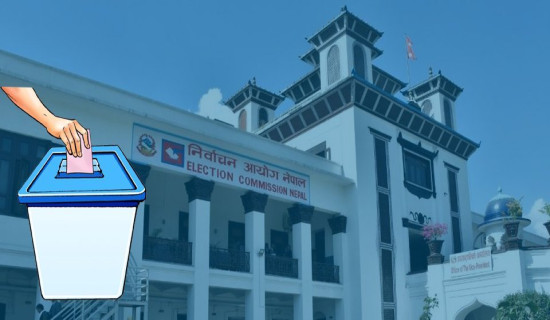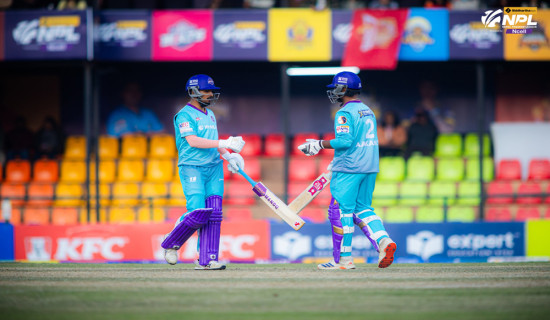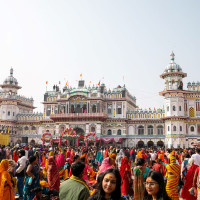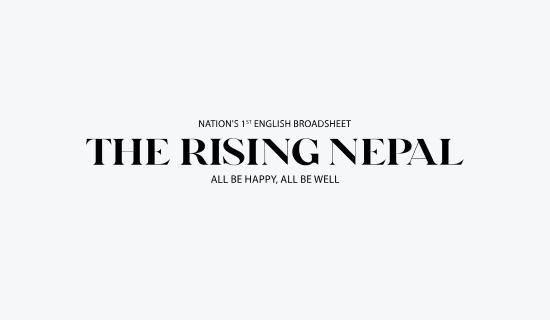- Wednesday, 26 November 2025
Don’t Lower Girls' Age Of Marriage
In a troubling move that risks undermining decades of progress in gender equality and youth empowerment, the Nepal government is considering lowering the legal age of marriage from 20 to 18. Citing reasons such as legal inconsistencies and rising rape cases, the proposed revision of the Child Act and Criminal Code seems to offer a convenient, if not deeply flawed, solution to a much more difficult problem. To be clear, this is not a win for personal freedom. It is a legislative shortcut that risks plunging young women who are already marginalised by poverty, inadequate education, and patriarchal norms into early marriages with lifelong consequences.
Supporters of the amendment argue that if one can vote at 18 and obtain citizenship at 16, why not marry at 18? But the question they avoid is: Is it sensible to rush a decision that determines one’s life trajectory, especially in a country where marriage is rarely just about love? In many rural communities, marriage is not a personal milestone; it is a family or community decision, often made without the girl’s consent. Let’s not pretend this is about love. Let’s not pretend this is about rights. This is about convenience for families eager to offload their daughters, for communities unwilling to invest in girl’s education, and for lawmakers who would rather appease traditionalists than challenge them.
Domestic violence
National surveys and research have repeatedly shown that early marriage derails girls’ education, increases the likelihood of adolescent pregnancy, and exposes them to domestic violence. According to national statistics, 37 per cent of Nepali women aged 20–24 are married before 18. In the Terai region, 37 per cent of girls aged 15–19 report experiencing sexual violence, and 19 per cent face other forms of physical abuse. These are not just numbers. These are lives forever altered by a system that chooses tradition over transformation.
Lowering the marriage age only legalises child marriage under a new name. Girls who are already vulnerable will face increased pressure to drop out of school, become mothers before they’re ready, and relinquish their autonomy before they have even had a chance to build it. If she’s “old enough to marry,” she should also be “old enough to decide.” But are we giving 18-year-olds that choice or just reinforcing the same coercive system in a more legally acceptable package? Not to forget: early marriage is a key driver of adolescent pregnancy.
The health risks of childbirth at a young age are well-documented, with complications from pregnancy and childbirth being the leading cause of death for girls aged 15-19 globally. In Nepal, where child marriage already affects nearly 40 per cent of girls before age 18, lowering the legal age further weakens the legal safeguards protecting them from coercion, control, and exploitation. It is ironic that in all this legislative fanfare, few seem to be asking the most affected voices what they really want.
Recently, teenage girls from eight districts in Madhesh Province submitted petitions to Prime Minister KP Sharma Oli, pleading for the legal marriage age to remain at 20. Their message was clear: at 18, they are neither physically nor mentally prepared to shoulder the responsibilities that marriage brings. Nepal has committed to ending child marriage by 2030 under the Sustainable Development Goals. Lowering the marriage age now would be a direct contradiction of that promise. It would betray every girl who dreams beyond the confines of early marriage.
Consensual unions
Yes, it is true that just keeping the legal marriage age at 20 won’t automatically end child marriage. In some instances, the law has been misused by parents to break apart consensual unions or punish young men through charges of rape and abduction. But the solution is not to lower the age; it is to implement smarter legal reforms that recognise consensual relationships while still protecting children from exploitation. If loopholes exist, fix them. Don’t amputate the whole law.
Nepal has come a long way in recognising the rights and dignity of its youth. But this bill threatens to reverse that progress. Instead of rushing to pass it, lawmakers should engage with the girls whose futures will be shaped by this decision. Until we find a truly balanced alternative, Nepal should uphold the current legal age of 20. Not because it is perfect, but because it sets a standard that prioritises maturity, education, and opportunity—things that every child, especially every girl, deserves before she is asked to become someone’s wife.
(Koirala is pursuing her bachelor's degree at St Xavier's College, Maitighar, Kathmandu.)
















